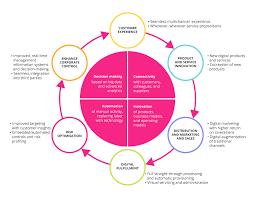Digital transformations can be even more difficult to achieve than the traditional kind but there are certain keys that lead to success. Companies that do achieve success point to several keys they use to improve their chances. For example, the organizations more likely to succeed use technologies, such as AI and the Internet of Things. However, this is only part of the equation. Digital transformation is multi-faceted and here are 10 key elements of successful digital transformation that can make it more successful.
Organizations face many critical decisions when they embark on digital transformation. For example, they need to decide whether to transform their existing business models or build new ones. Tying transformation to business objectives, such as improving customer satisfaction or improving employee productivity, usually results in more success. An Operational Data Store (ODS) can drive digital transformation because it integrates data from various systems into a central database. This enables real-time operational reporting and enables tactical decision-making.
Technology is driving value in organizations in various ways today, from automation and improved decision-making to production innovation and enhanced connectivity. With the many different systems in place, transformation tends to be more successful when it is enterprise-wide in scale. The whole organization needs to work towards a common goal instead of different departments trying to transform on their own.
However, transformation usually has to come in phases and keeping focus means having strict organizational priorities in place. It is vital to understand current systems and exactly what needs to happen to transform them.
Having leaders who are familiar with digital technology and a commitment to change is essential. When companies have the right people in key roles, such as a Chief Digital Officer (CDO), they not only have the necessary knowledge but can devote all their attention to the effort to transform. They will be committed to transformation because they understand how important it is and will know where to start, what the priorities should be and how to measure success.
It is often necessary to redefine the roles and responsibilities of individuals within the company. Having the right mix of skilled employees to work across the whole transformation cycle is a must. Cybersecurity, data analytics, software development and change management are just some of the crucial skills. Leaders need to encourage employees to challenge their old ways of working as well as provide continuous competency development training so employees are able to perform their roles successfully in a digital workplace.
Organizations may think that replacing their existing systems with expensive alternatives is the way to go. However, this may not always bring the improvements they expect. Within the e-Commerce landscape, for instance, organizations need to embrace modern architecture that brings more flexibility and integration. They need to centralize their customer and product data to offer a better customer experience and achieve consistency in messaging across all channels.
Consumer habits have evolved rapidly, enabled by new technology such as mobile messaging, emails, video chats and social media. Customers look for convenience, simplicity and instant responses. As a result, all points of interaction with them need to evolve. Management of data is one of the key aspects of elevating the customer experience. An ODS provides consistent and integrated data about customers so employees are able to access a full customer profile instead of having to find information in various different systems.
Source : https://www.mikegingerich.com/blog/key-elements-of-successful-digital-transformation/









